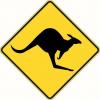
Originally Posted by
Pete Taran

Theo,
Glad to help. When I was making all those saw handles, I used card scrapers extensively for smoothing the flat surface of the top and bottom of the horns. There was no shortage of them because I always had offcuts from making the blades.
Patrick, to answer your question, I got that plane back around the time I sold the business to TLN. Some of the payment were for various tools, that was one. The box indicated that it came in either iron or bronze, perhaps he stopped making the iron model. Was never a fan of any of the bronze stuff as a wear surface on wood.
Since Stewart asked, I will endeavor to take some pictures tomorrow and show the 212 in action.





 Reply With Quote
Reply With Quote





